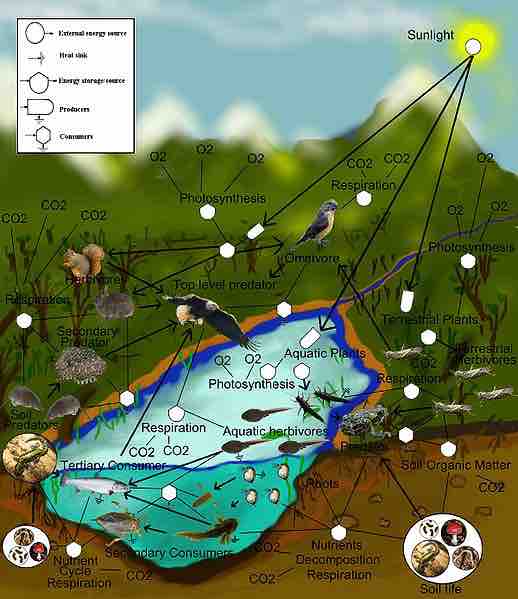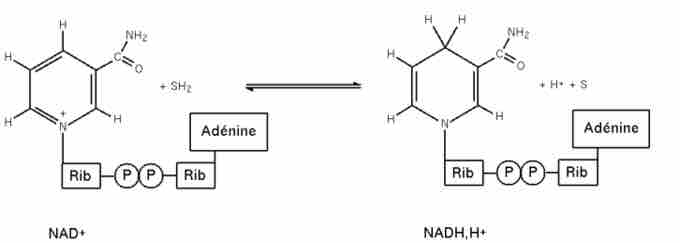A wetland is a land area that is saturated with water, either permanently or seasonally, such that it takes on the characteristics of a distinct ecosystem. Primarily, the factor that distinguishes wetlands from other land forms or water bodies is the characteristic vegetation that is adapted to its unique soil conditions: Wetlands consist primarily of hydric soil, which supports aquatic plants. The water found in wetlands can be saltwater, freshwater , or brackish . Main wetland types include swamps, marshes, bogs and fens. Sub-types include mangrove, carr, pocosin, and varzea.
Wetlands play a number of roles in the environment, principally water purification, flood control, and shoreline stability. Wetlands are also considered the most biologically diverse of all ecosystems, serving as home to a wide range of plant and animal life.
In balanced soil, plants grow in an active and steady environment. The mineral content of the soil and its heartiful structure are important for their well-being, but it is the life in the earth that powers its cycles and provides its fertility. Without the activities of soil organisms, organic materials would accumulate and litter the soil surface, and there would be no food for plants.
The soil biota includes:

A freshwater aquatic and terrestrial food-web.
The food web is a complex and interconnected.
Megafauna: size range - 20 mm upward, e.g. moles, rabbits, and rodents.
Mesofauna: size range - 100 micrometres to 2 mm, e.g. tardigrades, mites, and springtails.
Microfauna and Microflora: size range - 1 to 100 micrometres, e.g. yeasts, bacteria (commonly actinobacteria), fungi, protozoa, roundworms, and rotifers.
Of these, bacteria and fungi play key roles in maintaining a healthy soil. They act as decomposers that break down organic materials to produce detritus and other breakdown products. Soil detritivores , like earthworms, ingest detritus and decompose it. Saprotrophs, well represented by fungi and bacteria, extract soluble nutrients from delitro. The ants (macrofaunas) help by breaking down in the same way but they also provide the motion part as they move in their armies. Also the rodents, wood-eaters help the soil to be more absorbent.
Nutrient cycling in lakes and freshwater wetlands depends heavily on redox conditions. Under a few millimeters of water heterotrophic bacteria metabolize and consume oxygen. They therefore deplete the soil of oxygen and create the need for anaerobic respiration. Some anaerobic microbial processes include denitrification , sulfate reduction and methanogenesis and are responsible for the release of N2 (nitrogen), H2S (hydrogen sulfide) and CH4 (methane). Other anaerobic microbial processes are linked to changes in the oxidation state of iron and manganese . As a result of anaerobic decomposition, the soil stores large amounts of organic carbon because decomposition is incomplete.
The redox potential describes which way chemical reactions will proceed in oxygen deficient soils and controls the nutrient cycling in flooded systems. Redox potential, or reduction potential , is used to express the likelihood of an environment to receive electrons and therefore become reduced. For example, if a system already has plenty of electrons (anoxic, organic-rich shale) it is reduced and will likely donate electrons to a part of the system that has a low concentration of electrons, or an oxidized environment, to equilibrate to the chemical gradient. The oxidized environment has high redox potential, whereas the reduced environment has a low redox potential.

Redox Potential
The redox potential describes which way chemical reactions will proceed in oxygen deficient soils and controls the nutrient cycling in flooded systems.
The redox potential is controlled by the oxidation state of the chemical species, pH and the amount of oxygen (O2) there is in the system. The oxidizing environment accepts electrons because of the presence of O2, which acts as electron acceptors:
O2 + 4e- + 4H+ → H2O
This equation will tend to move to the right in acidic conditions which causes higher redox potentials to be found at lower pH levels. Bacteria, heterotrophic organisms, consume oxygen while decomposing organic material which depletes the soils of oxygen, thus increasing the redox potential. In low redox conditions the deposition of ferrous iron (Fe2+) will increase with decreasing decomposition rates, thus preserving organic remains and depositing humus.